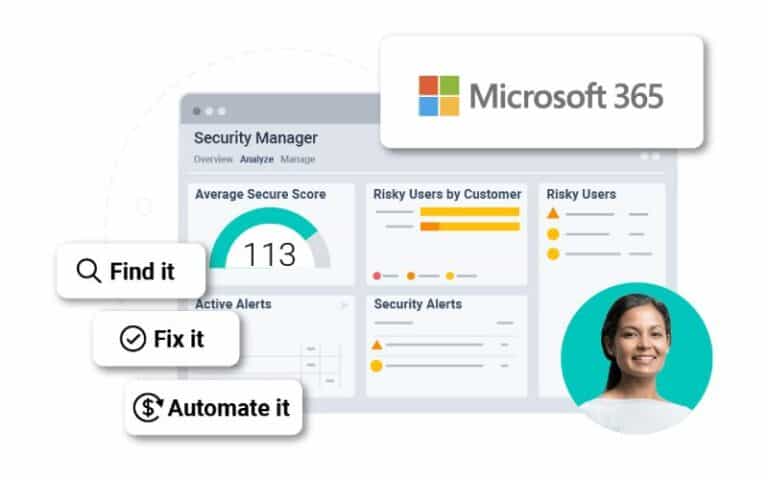SkyKick launched Security Manager, a management solution for the security of Microsoft 365 environments. The solution allows MSPs to manage the security of multiple Microsoft 365 environments in a central dashboard.
Microsoft 365 customers have access to a variety of integrated security features. Although you don’t necessarily need an external solution to manage the security of a Microsoft 365 environment, management requires time and money. Hence, many organizations outsource the task to MSPs.
Microsoft provides several solutions to help MSPs manage customer environments at scale, including the Cloud Partner Program. Support is better than nothing, but the solutions are far from perfect. Manual tasks are inevitable for MSPs that exclusively use Microsoft’s tools to manage multiple Microsoft 365 environments.
SkyKick launched Security Manager to speed up the process. The solution aggregates security signals from multiple Microsoft 365 environments into a central view, allowing MSPs to oversee all threats in a single dashboard. The solution allows MSPs to solve threats in multiple environments with automated workflows.
SkyKick Security Manager
During the solution’s announcement, SkyKick cited a survey which indicates that help desk teams spend about 20 percent of their day on security support tickets. According to SkyKick, a small MSP with ten employees can easily spend 2,500 hours a year on support tickets concerning two-step verification, phishing and single sign-on (SSO) in Microsoft 365.
Security Manager is designed to eliminate such tickets. The security configuration of multiple customer environments is automated where possible. As a result, MSPs can secure environments proactively instead of reactively.
“This is game-changing”, said Shane Monty, Vice President at Present, a large MSP out of Montreal, Canada. “Security Manager brings down all that Microsoft 365 security information into one centralized console that is easy, user-friendly, and actionable. This creates more efficiency in our security and operations teams, allowing us to manage more clients with the same resources.”



















